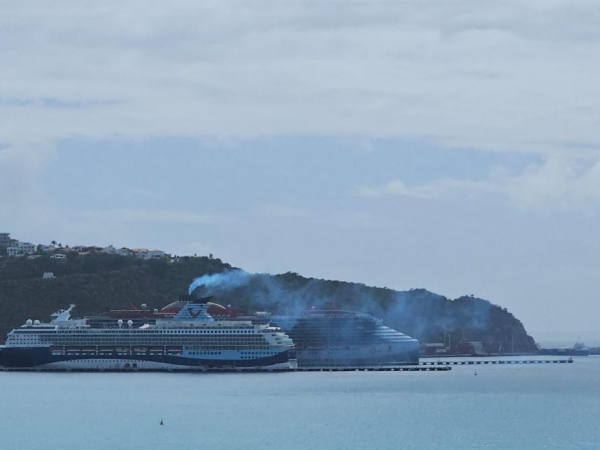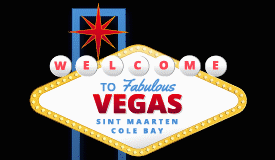 PHILIPSBURG:--- There’s been some talk lately criticizing the use of LNG (liquefied natural gas) in ships. Some say it’s not a real solution for cleaner oceans and skies. But what many of these articles don’t say is just as important as what they do.
PHILIPSBURG:--- There’s been some talk lately criticizing the use of LNG (liquefied natural gas) in ships. Some say it’s not a real solution for cleaner oceans and skies. But what many of these articles don’t say is just as important as what they do.
Let’s break it down simply so everyone in Sint Maarten can understand what LNG really will mean for us, our air, our port, and a financial boost to our economy.
- LNG Means Cleaner Air, Right Now!
When ships use LNG instead of diesel, the difference is immediate and powerful. LNG cuts:
- Harmful sulfur gases by 99%
- Dangerous nitrogen oxides (NOₓ) by 85%
- Dirty soot and particles by 95%1
That means cleaner air around our coastlines and ports where people live, work, and where tourists arrive. Better air means fewer health problems, especially for children, the elderly, and individuals with respiratory issues. For a small island that depends heavily on tourism and hospitality, this is not just good news; it’s essential.
- LNG Helps Fight Climate Change—Even With Its Flaws
Some people bring up a concern called “methane slip,” which is when small amounts of methane leak during LNG use. Yes, this is a real issue, but the industry is already fixing it with better engines and technologies. Modern studies show slip averages about 3.8%, but improvements are lowering this2. Even with some slip, LNG still produces 20–30% less CO₂ than conventional marine fuels over its full life cycle3. That means it helps reduce greenhouse gases now, while we continue working toward zeroemission technologies like hydrogen or electric power.
Waiting for “perfect” solutions means doing nothing now and that’s not an option for an island already seeing the effects of climate change.
- LNG Meets Global Rules—and Saves Money Doing It
In 2020, the International Maritime Organization (IMO) introduced strict rules limiting sulfur emissions from ships. Many vessels had to install expensive scrubbers to comply. LNG-fueled ships naturally meet these standards without the need for add-ons4.
Even better, LNG engines are bio-LNG and e-LNG ready, meaning they can switch to renewable LNG blends in the future with minimal modification5. That flexibility makes LNG a smart investment both now and going forward.
- Ports Around the World Are Already Switching
Some say there’s not enough infrastructure for LNG. That used to be true—but not anymore. As of this year, 185 ports worldwide offer LNG bunkering, a 50% increase since 20206.
Even closer to home, the Caribbean is preparing. Aruba and other nearby ports are investing in LNG ready facilities7. Globally, more than 1,300 LNG-capable vessels are either operating or on order8. Sint Maarten can and should be part of this movement.
- LNG Is a Bridge to a Cleaner Future, Not a Step Back
Let’s be honest: LNG is not perfect. But in 2025, we need real solutions not just dreams. Hydrogen, methanol, and ammonia are promising, but they’re expensive, hard to store, and not widely available yet9. LNG is here. It works. And it can cut emissions today while giving us time to develop better technologies for tomorrow. Choosing LNG doesn’t mean giving up on greener options. It means taking smart, science-based steps right now.
The Bottom Line: Let’s Lead…not Follow
Some critics seem more interested in pointing fingers than finding solutions. Some may even have hidden agendas pushing opinions that serve other countries or corporations—not the people of Sint Maarten. But we know what’s at stake:
- Our economy
- Our children’s future
- Our leadership in the Caribbean
MP Lacroes is quoted saying: LNG is not the final answer, but it’s a smart, safe, and necessary step forward. Let’s not let perfect be the enemy of good. Real progress is being proposed for our country, our health, and our people. It’s time we stand behind it.
Footnotes & Sources
- European Maritime Safety Agency (EMSA), LNG Bunkering and Emission Reductions, https://emsa.europa.eu/sustainable-ports/lng-bunkering-html ↩
- Anderson et al., Methane Emissions from LNG-Fueled Ships, Environmental Science & Technology, 2023, https://pubs.acs.org/doi/10.1021/acs.est.2c01383 ↩
- SEA-LNG, Lifecycle GHG Emissions of LNG as a Marine Fuel, https://sea>>-org ↩
- IMO, Regulations for the Prevention of Air Pollution from Ships, https://www.imo.org/en/OurWork/Environment/Pages/Air-aspx ↩
- DNV, LNG-Fueled Ships Are Bio-LNG Ready, https://www.dnv.com ↩
- World Ports Sustainability Program (Clarksons Data), 185 Global Ports Offer LNG Bunkering, https://www.worldports.org/185-global-ports-can-bunker-lng ↩
- Offshore Energy, Caribbean Ports Prepare for LNG Bunkering, https://www.offshore-biz ↩
- SEA-LNG, 2024 Global LNG Fleet Outlook, https://sea>>-org/2025/01/focus-on-practicalitydrives-lng-pathway-growth-in-2024 ↩
- International Chamber of Shipping (ICS), Zero-Emission Fuels and Technologies, https://www.icsorg/wp-content/uploads/2023/03/Zero-emission-shipping-technology-report.pdf ↩









